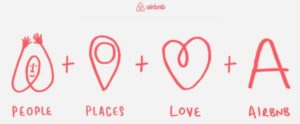How to Incorporate Human Centered Design in Your Software Build
What exactly is Human Centered Design (HCD)? Why now? Since the dawn of software programming, hasn’t all programming been centered around the user? Granted, that dawn only happened a few decades ago, but still, why is HCD trending and how can you incorporate this in your software build and product?
Why is human centered design important?
We’re going old school and going back in time to help you really understand why HCD is so important, and why you should care.
Do you remember when object-oriented programming became mainstream? A new era of software builds erupted on the market and thousands of software applications, both popular and unpopular, were developed.
Object Oriented Programming allowed software to run more efficiently, allowing for great programmer productivity and efficiency while drastically lowering the costs of software development and engineering. While we still benefit from the innovations of this era and productivity and efficiency have improved exponentially, there’s just one thing missing: how’s the user really doing?
With human centered design, the paradigm shift of software development changes from developing for the user to developing with the user. And that makes all the difference in the world.
At the very core of software engineering is the need to fix a problem – sometimes, fixing a problem that a user didn’t even know existed. Countless hours and millions of dollars were poured into massive software companies to be the problem solvers of the world through the solutions they offered. Every productivity gap was addressed, machines were made to run faster, and organizations and businesses were connected and unified in fascinating ways.
But still, how is the user really doing?
Human centered design is a new way of entering into the software development cycle by asking the question: How will this make life better for the user?
It’s no longer about developing just to fix a problem – but instead, it’s about fixing life in general.
And to do that, you have to involve the user; the human.
And ask any human what needs to be fixed, and you’ll have the opportunity to create value, opportunity, and revenue like never before.
Enter human centered design.
Human centered design examples
Headspace
Since the birth of the mobile device and always on connectivity, users have been plugged in 24/7, working nonstop, and always having the compulsive urge to check every notification that dings their device.
This isn’t healthy.
So the founders of Headspace asked the question: what do users need and how can we offer a product to improve their lives? Almost 15 years later, Headspace has over 70 million members with one mission: to improve the health and happiness of the world. Their meditation and mindfulness tools support mental health, reduce stress, and helps users relax.
Airbnb
Airbnb started with just an air mattress in a living room, offering a quick space for users who were unable to book rooms in a saturated hotel market. They blew up up the air mattress, cooked breakfast, and immediately the first bed and breakfast listing was created.
From the very first booking, they asked the question: how can we make this better for you?
15 years later and Airbnb is recognized all over the world as the source for quick and affordable getaways, allowing more people to travel on fixed budgets, securing rooms in cities with no hotel, and at the same time, allows landlords with extra rooms to make a buck or two.
Additionally, Airbnb continues to improve the overall experience for the user by making the reservation process simple, easy to use, and takes the headaches away from dealing with the typical hotel chains and processes of room reservations.

Airbnb won market share by creating a human-focused experience.
Loom
Even before COVID hit, virtual meetings and videos were starting to become more mainstream. However, it’s a pain just to get this meetings scheduled and launched, and let’s not forget that user that can never figure out his mic setting.
So the founders of Loom asked the question – how can we help the users enjoy the video experience and utilize video for greater efficiency? Addressing questions like this gave birth to Loom, where users can quickly and easily share their screen, record a very short video to explain a problem, answer a question, or just quickly connect with a prospect – with no scheduling required!
Loom is now used all over the world to send quick videos and screen recordings to make business – and life – happen.
Implementing a human centered design process
Define – What is the problem we need to solve?
Creating value is at the core of almost every business model. Through value creation, problems are solved and profits are made.
With human centered design, how exactly do you create this value? Well, it’s quite simple: you involve the user at every stage of development.
It’s crucial to engage with at the very onset to truly understand their needs, their problems, issues, and concerns. Early engagement eliminates the costly need to build fully operational prototypes of softwares and bakes in fluidity and flexibility to change, pivot, and steer the development in the direction of the end user.
Ideate – What are all the different ways we can solve this problem?
It all starts with brainstorming. It starts with the big idea.
However sometimes the big idea is a collective effort of listening to hundreds and possibly thousands of smaller ideas to get the big picture. Each idea is like a small piece of a jig saw puzzle that eventually locks in and starts forming something bigger. It’s only when these smaller pieces are connecting that this big picture starts revealing itself.
Collecting these ideas can come in many different ways.
From small groups to larger online forums, it’s easy to start with a question. Ask the users what problems in life are they having, and they’ll give you answers.
Yes, some answers could be absolute junk, but in all that junk you will find some nuggets.
Eventually, you’ll have a collection of wonderful ideas to start forming some preliminary concepts and ideas for the perfect solution. From here, start identifying patterns, create objectives and frameworks on how to present your solution, and get the user involved at this stage as well.
If left up to the developers and programmers at this stage without any interaction from the user, the overall intention and purpose may drift. Creating milestones within the development cycle at which to interact with the user is vital to keep from project scope creep and stay on track.
As HeadSpace, AirBnB, and Loom did, they all started with the question to the user; what is it that you need? And instead of designing their applications to fix the problem, they worked with the user to not only solve their problem, but create value and make life better.

Prototype and test – Do our users like the solution?
Harvard Business School Professor Clayton Christiensens’s jobs to be done theory can, and should be, applied to your working model of your software. Does your created solution do a specific job? Does it achieve a particular goal or make the user’s life better? If not, they are not going to like the solution and it’s time to go back to the drawing board.
Humans don’t buy a product, they hire it.
Continual testing, retesting, and testing more is crucial to the success of your solution. And in this cycle, it’s almost very important to expand your segment to include as many key demographics as possible. Remember, users are hiring your product to improve their lives. If it’s not, well, as Donald puts it, “you’re fired.”
The good news is that with human centered design, your users should love the solution; the prototypes and tests you offer of your solution should not be far from the mark. By solving the problem with the user and not for the user, and involving the users during the development cycle, they are in a sense owning the solution. They are helping to write the fix to their very own problems and in doing so, satisfaction and expectations in this stage should be high and consumer experiences exceptional.
Implement – How can we improve the solution?
If COVID taught us anything, it’s that things are changing, and always will be changing.
What users needed just six months ago is completely different today, and what will solve their problems and improve their lives six months down the road could be a complete 180.
Once you’ve asked the questions of the users, and you’ve worked with the users to build out, test, and implement the solution, you’re not done. You’ll never be done. Well, unless you want to be done as a company, that is.
With human centered design, the user is always going to be at the forefront, even in the post-development cycles of software. Once you’ve developed, packaged, and delivered the product, it’s paramount to continually revise, update, and innovate.
And this is where you rinse, wash, and repeat.
Once the final product is in the hands of your users, it’s time to start asking questions again. Yes, you’re going to get answers you don’t like. Sure, you are going to get negative feedback, but you’ll get those nuggets of truth and inspiration that will allow you to continue to improve, scale, and update to deliver even greater value and improve the users’ lives in greater measures.
A future-focused approach to human centered design
At Specter we define human centered design as an active process of building products and solutions that address the core needs of the user. Too many times in tech the solution is built to maximize profits or push a certain aesthetic on unsuspecting users. Our mission is to build things that make people’s lives easier and we firmly believe that a commitment to the user experience is what drives innovation and sustained growth.
Did you know that Specter has been selected among the Top California Software Development Companies by Designrush?


